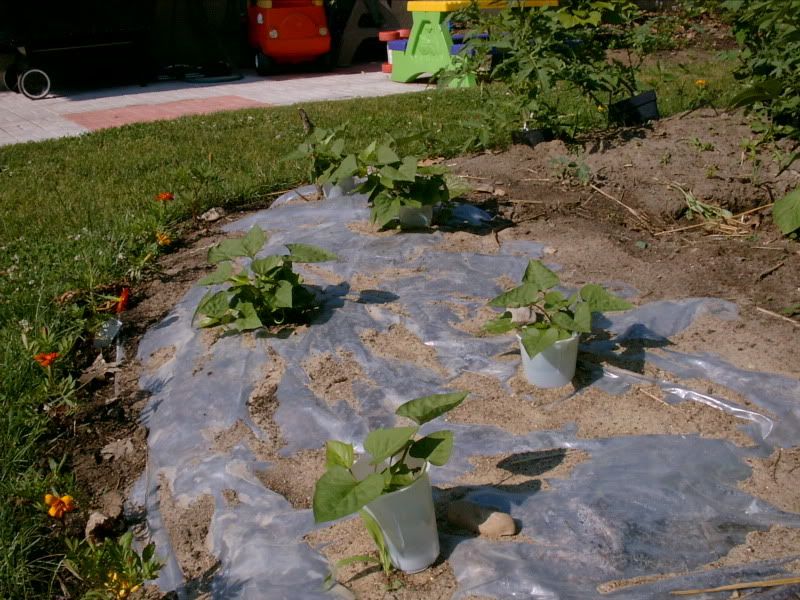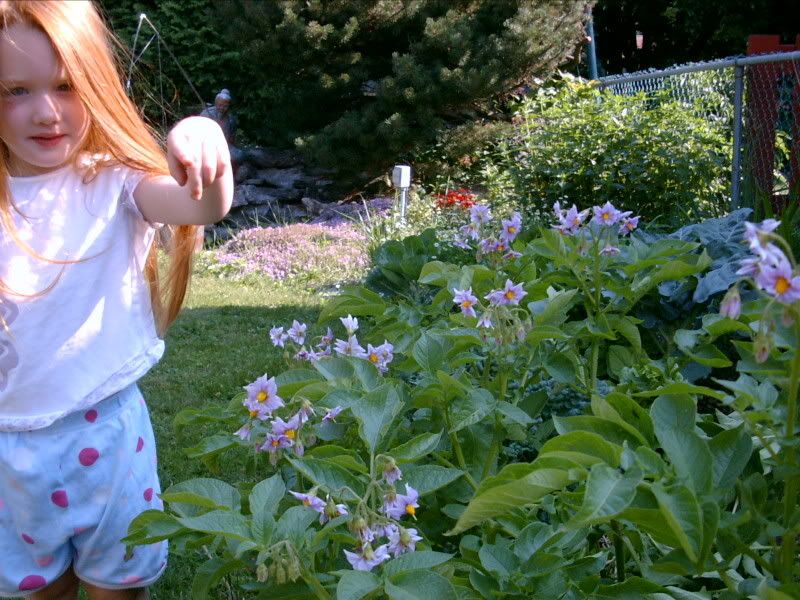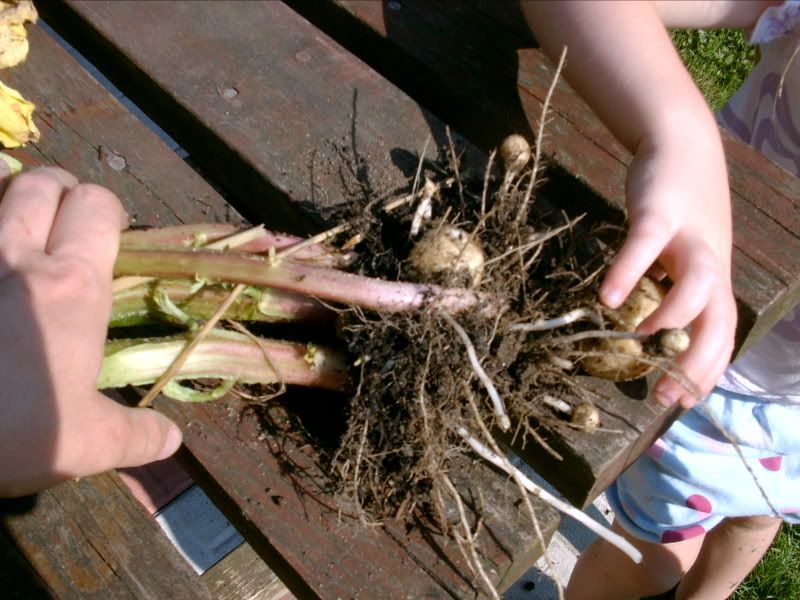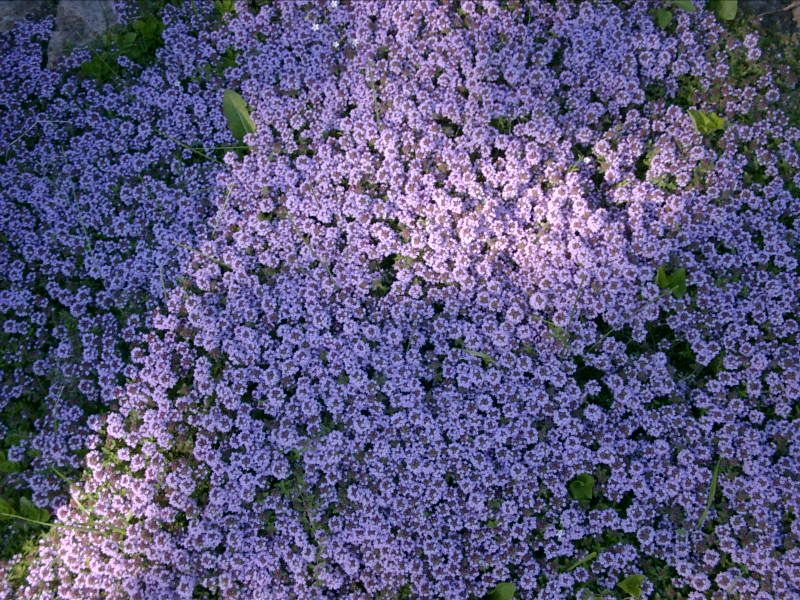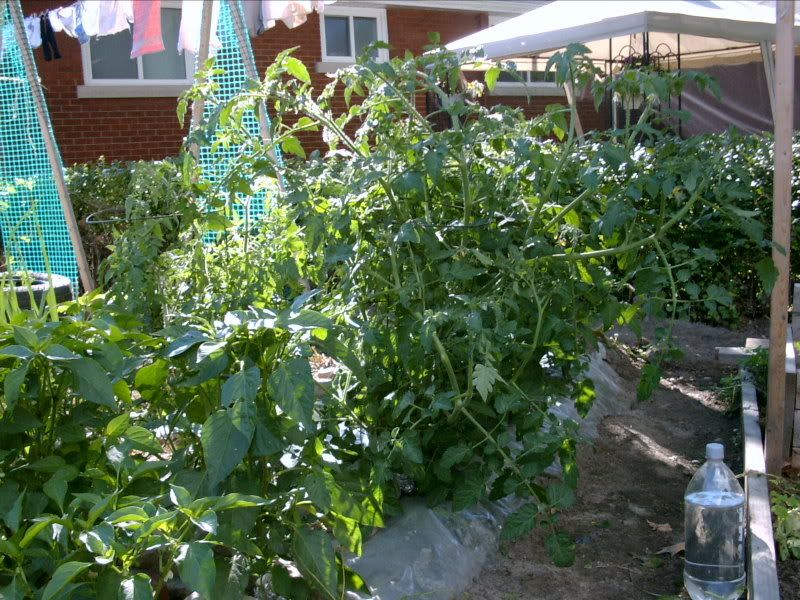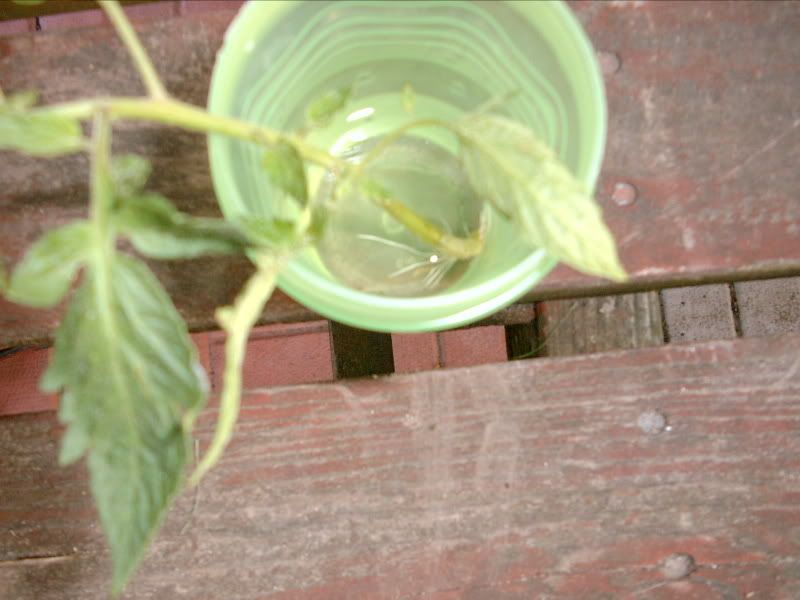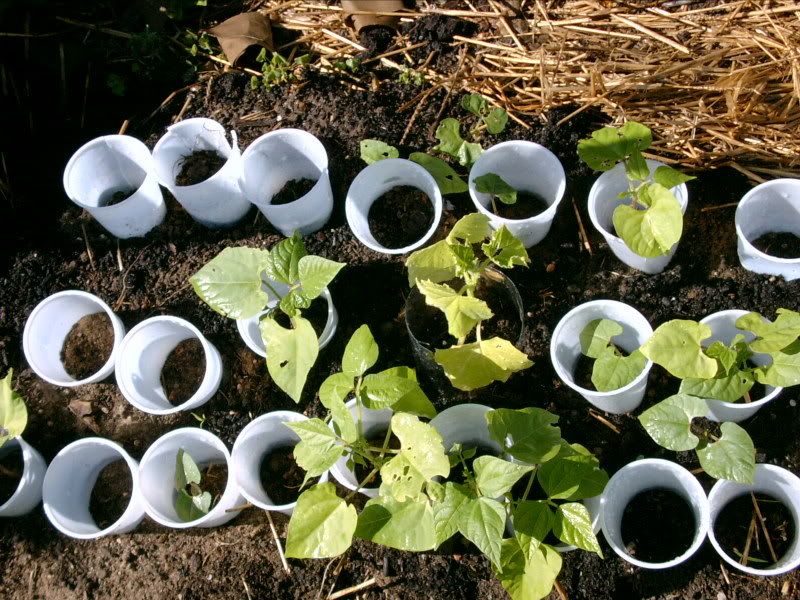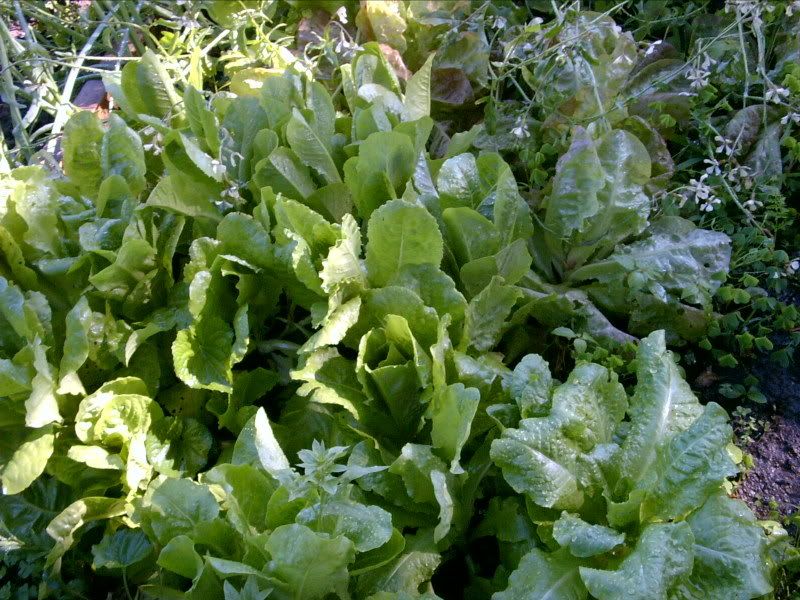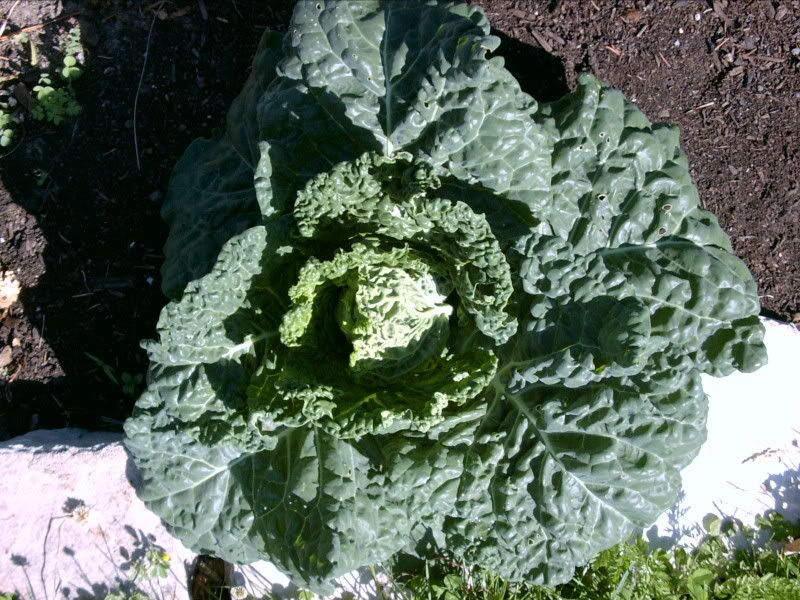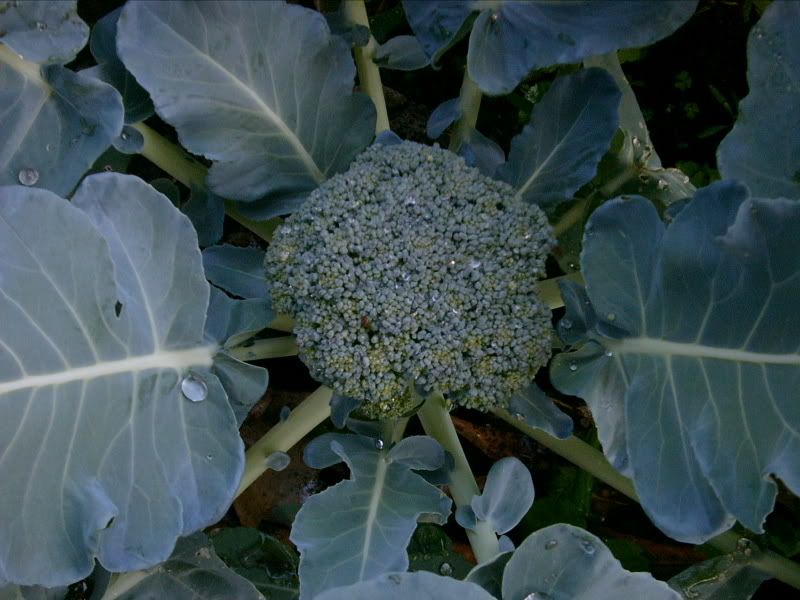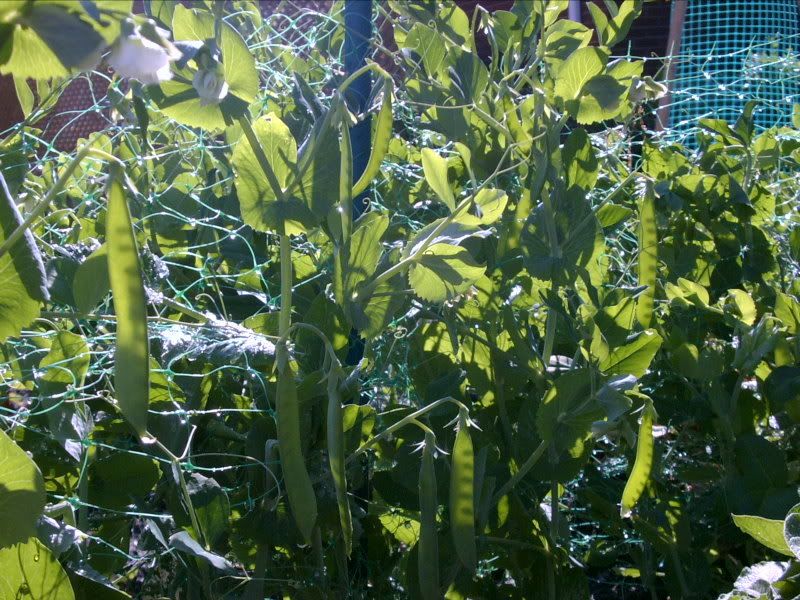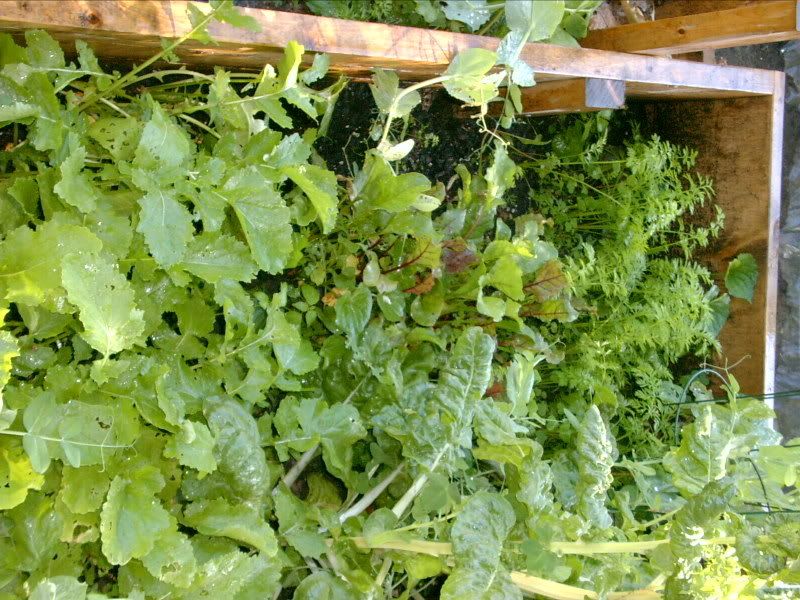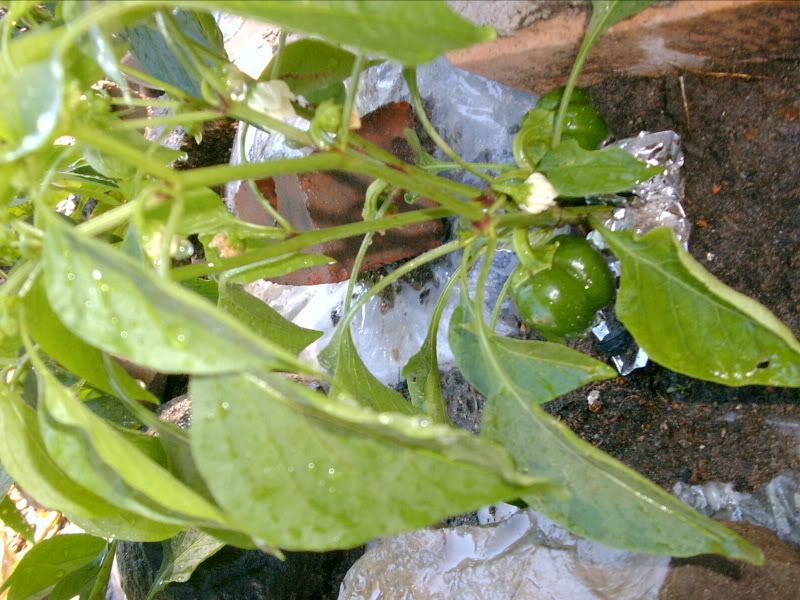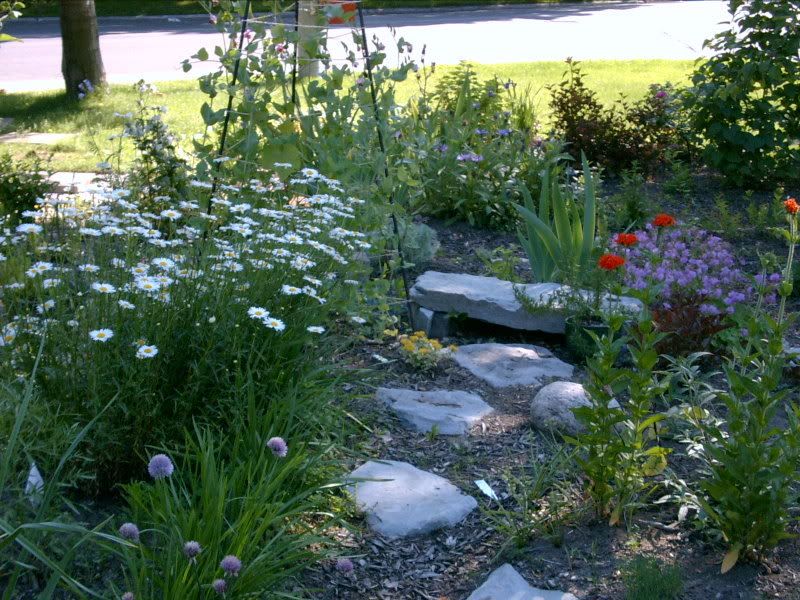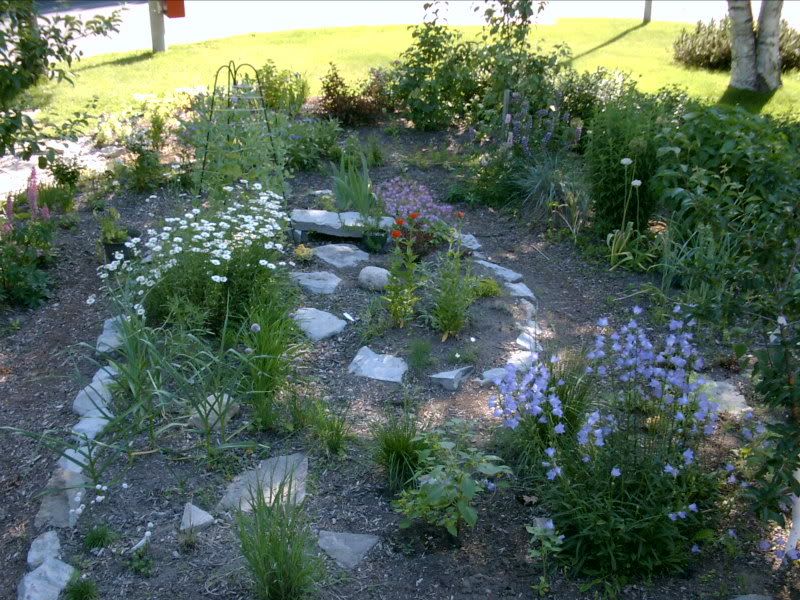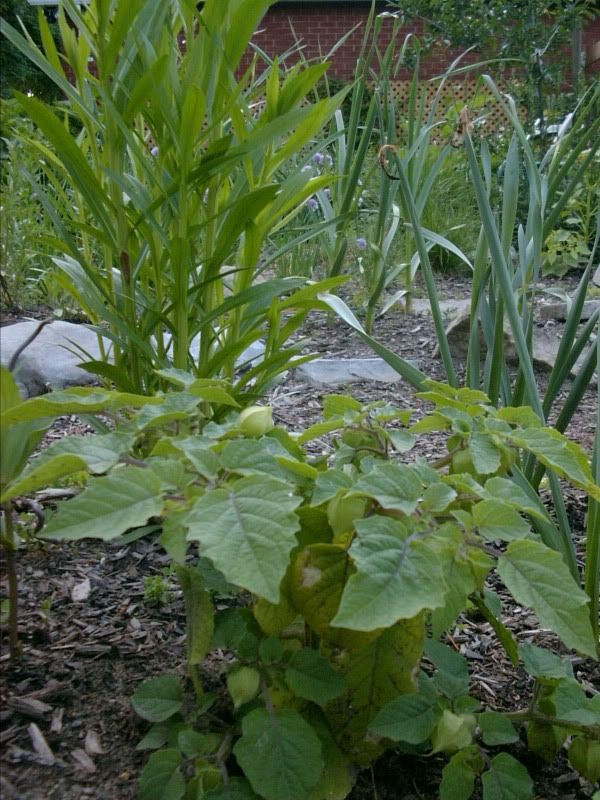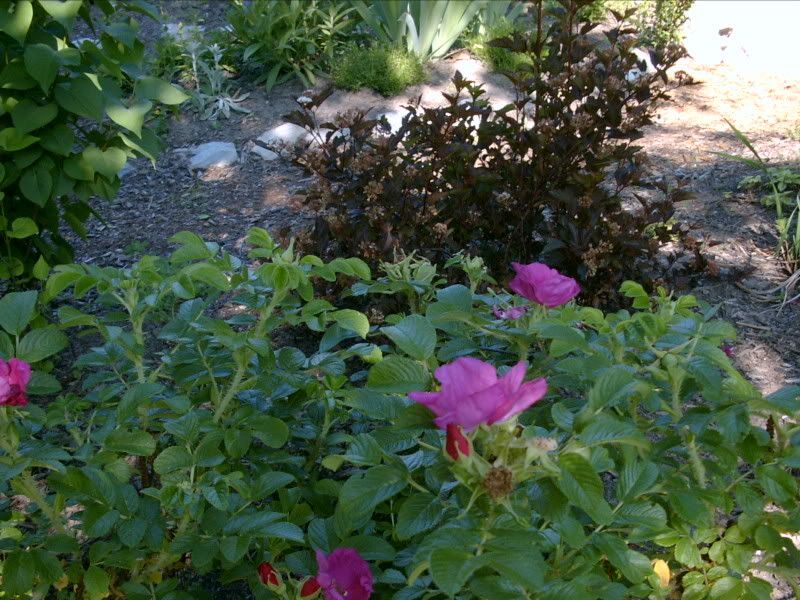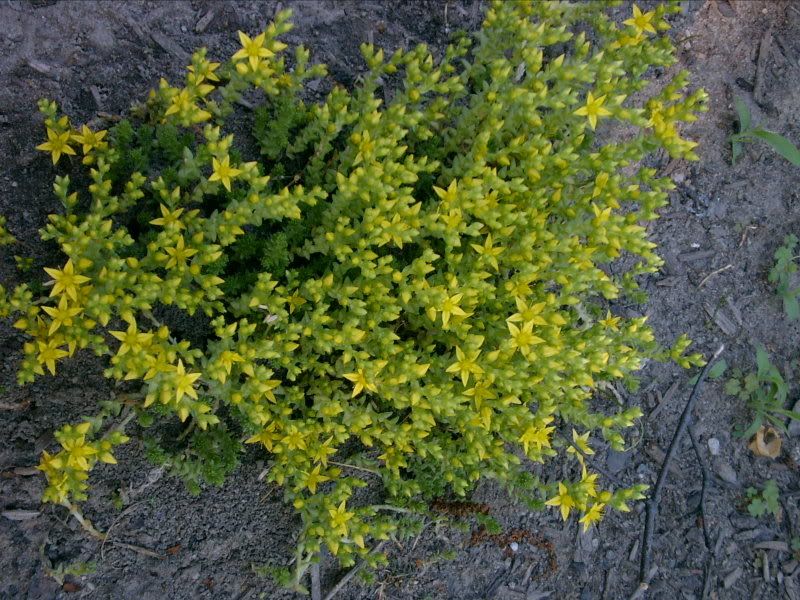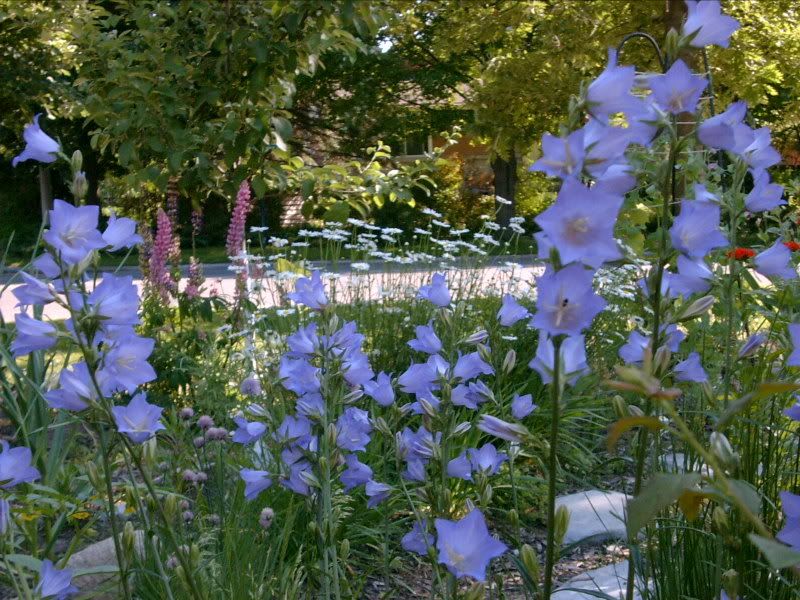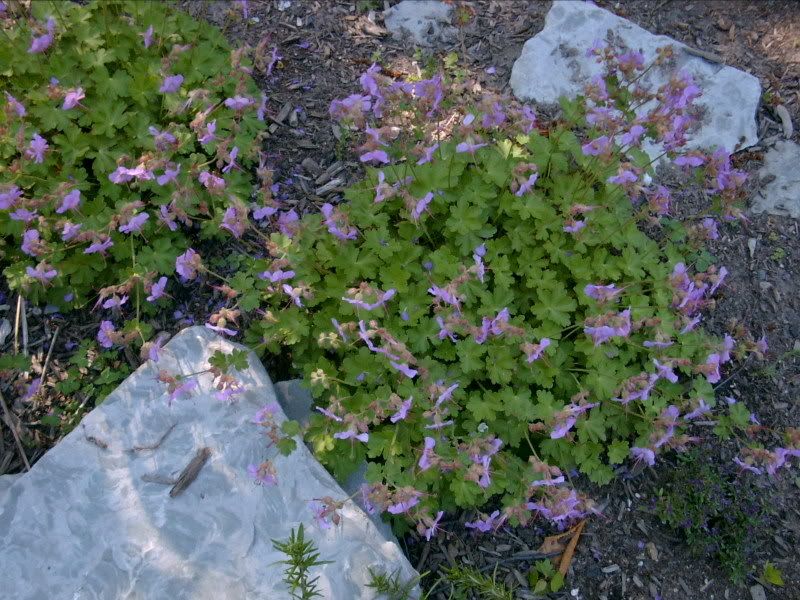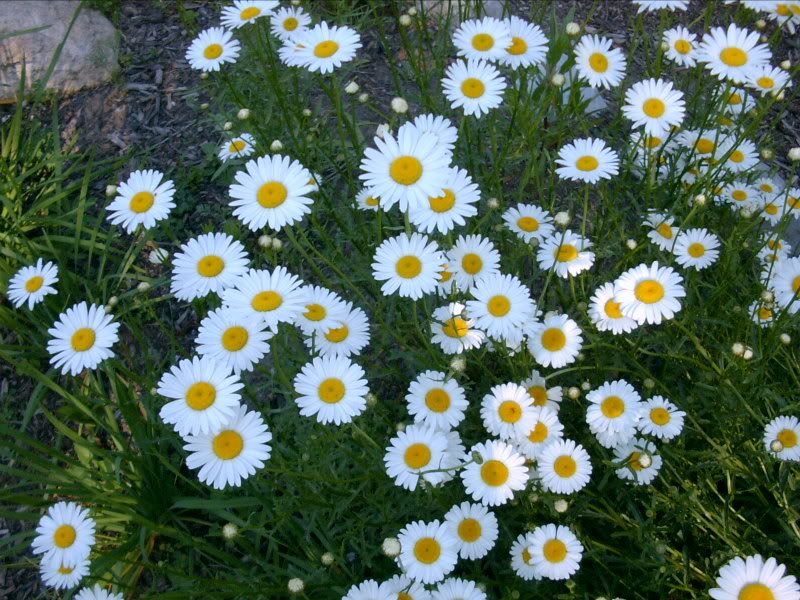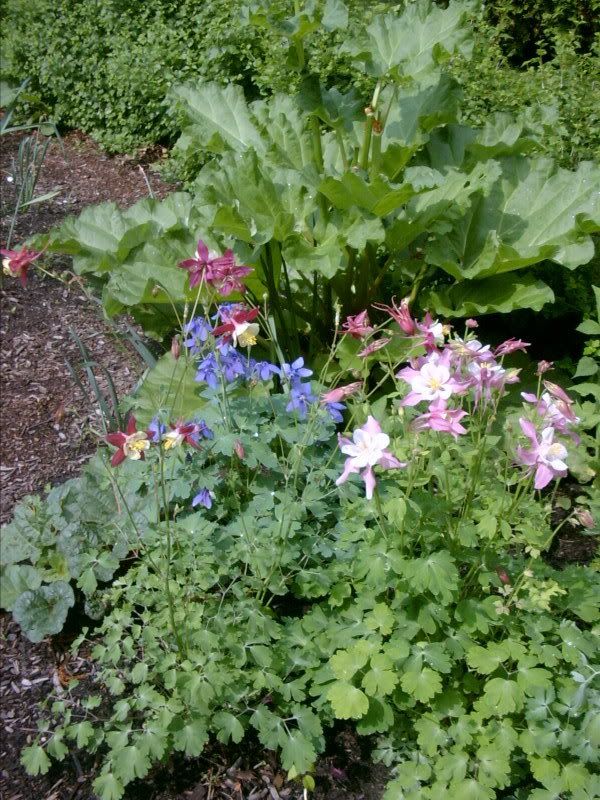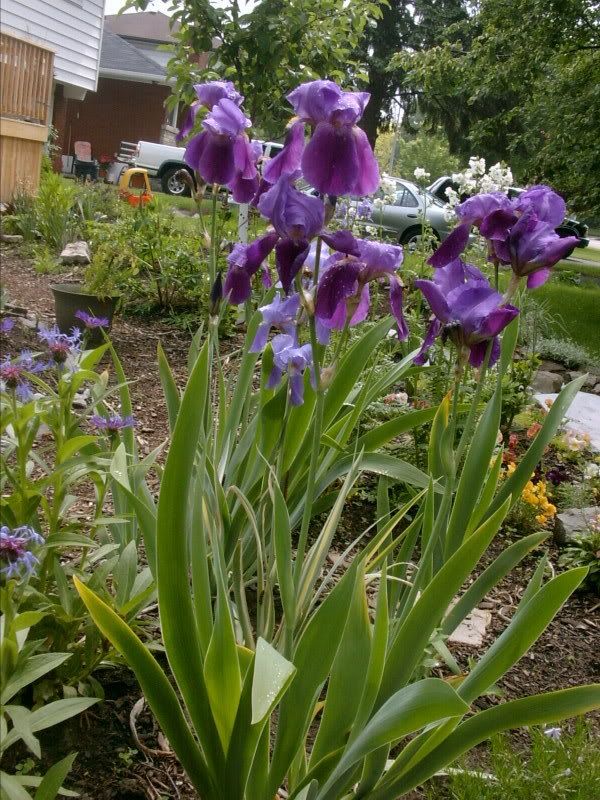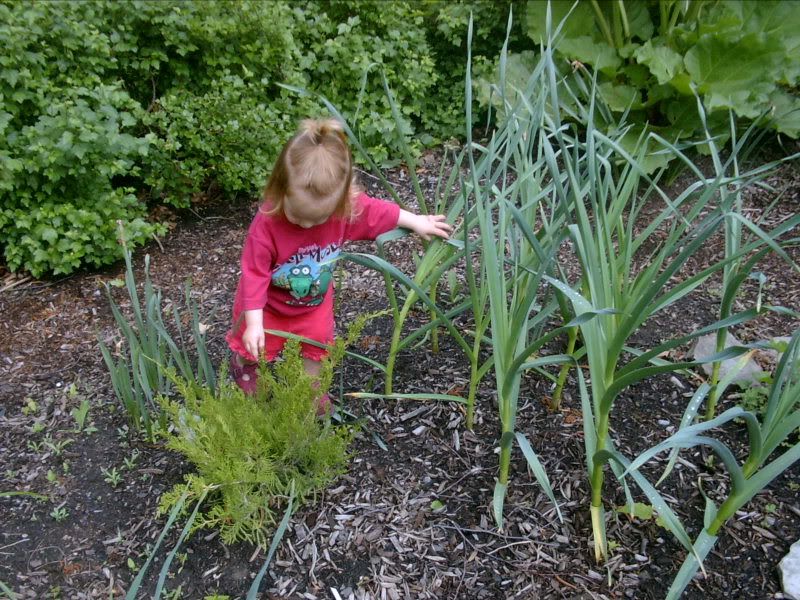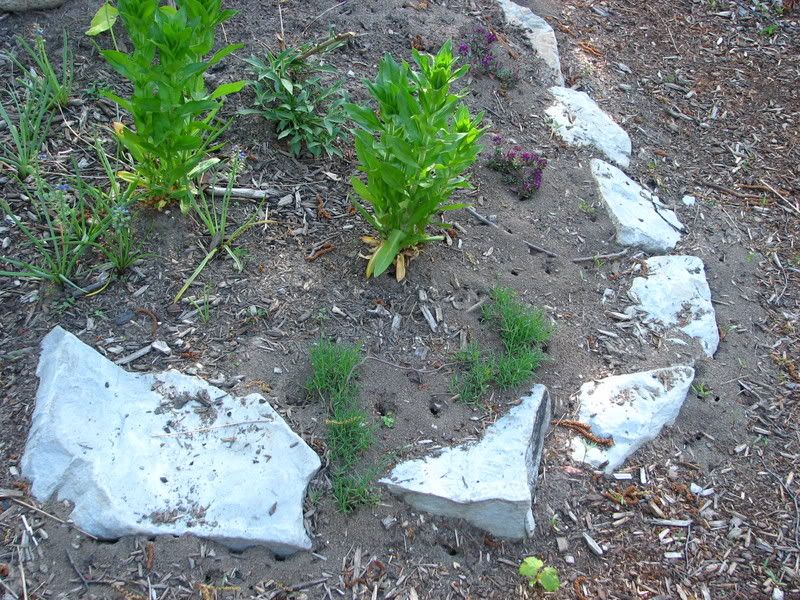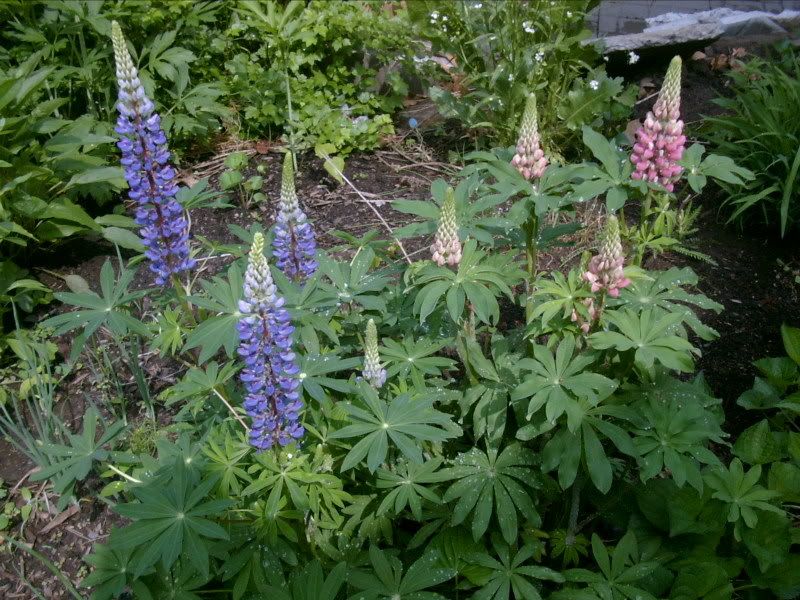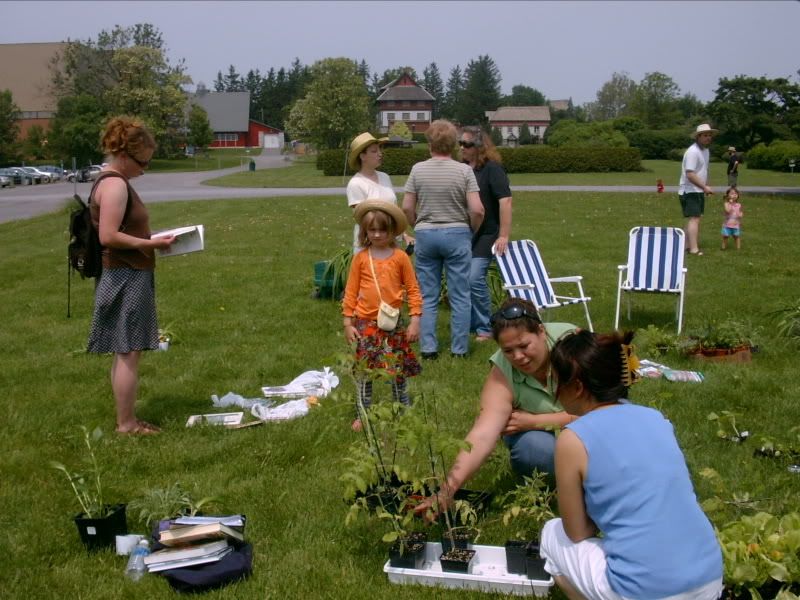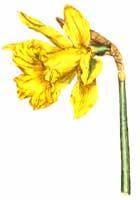When saving seed, nothing is as easy as peas and beans. Here is an example of a trade from a
Bifucated Carrot, a blogger that I read (and admire) regularly. He's the foremost in political gardening I've read yet.
All the way from Amsterdam, he sent me a package of yellowish pea seeds - the infamous
purple podded capucijner pea. In great anticipation, I planted them around my grape trellis (the immature vine will be trained into a weeping grape). The bunny cut some of the young shoots off before they were much past ankle high. I guarded them with green plastic netting (best defence against pests - barriers). They soft green leaves with purple at the stem joints, climbed vigorously. They are now topping the trellis and the pods are indeed a deep purple.
Here are some of the flowers:
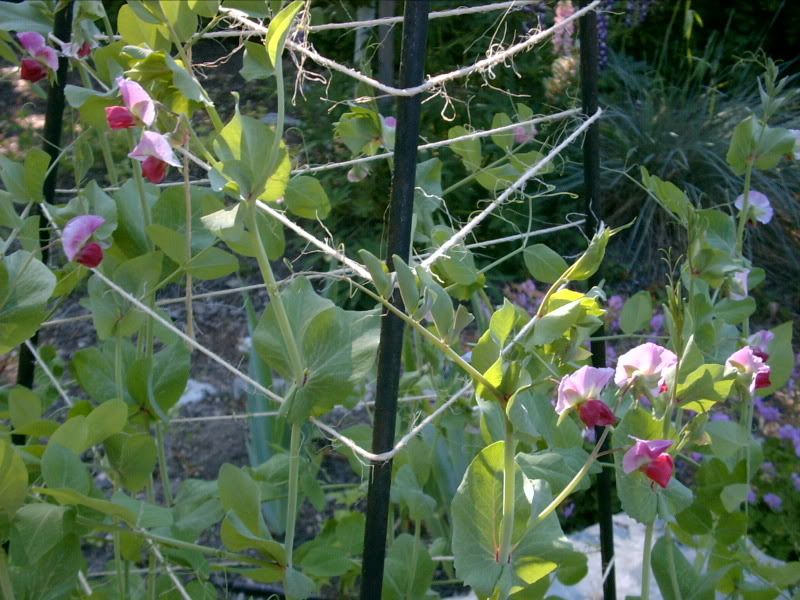 Purple / Blue Capujiner Pea
Purple / Blue Capujiner Pea
The pea is intended on being used for soups. This year, I'm simply saving seed but next year, watch out! There will be a good sized plot devoted to them beside my favourite dried bean -
Cherokee Trail of Tears. Incidentally, this is the bean that went in the other direction, from Ottawa to Amhersterdam.
How to save pea seeds:The great thing about peas (and beans - much of the following counts for them too), is that they are inbreeders. That means, that they do not suffer a loss of vigour after several generations of saving them from a small gene pool. It still is desirable to save from more than one plant but it is 'possible' to save from just one. They also are self pollinating, meaning that theoretically you should have very little mixing and mingling between plants. The variety that you save should come true.
Accorinding to seed saving guru
Suzanne Ashworth in Seed to Seed:
'Pea flowers are perfect and self-pollinating. Most references indicate that the
flowers are pollinated before opening and that crossing is very minimal... Pea
varities should be separated by a minimum of 50'. Blossom bagging or caging* can be used to assure seed uprity when it is necessary to grow different varities
side by side.'
*Bagging and caging are both techniques used to isolate self-pollinating species. Bags of remay cloth or other light weight breathable material can be placed around the developing flower heads of plants like tomatoes or peas so that no insect can get in to do a little cross pollination mischief. Caging is bagging on a big scale - cover the whole plant in a constructed cage lined with something like remay.
If you decide to save seed, pick the plants with the most desirable charateritics. If earliness is important to you, then instead of picking those first peas, save that plant (assuming it also shows other characteristics that you want) for seed. Mark off any plants that you want to save for seed and give them lots of attention.
Then wait until the pea pods are fully mature, even dry on the stalk. However, be careful to watch the weather. Once the peas are mature, they may sprout inside the pod if soaked with a lot of rain. If rain is expected, you can pick any pods that are mature to dry inside. (I write the above from my experience with beans). Careful to discard any peas that are damaged, or appear diseased.
Once they are FULLY dry, remove from pods, and then let the DRY MORE. Forgive the emphasis, but slightly wet seed that is placed in a sealed jar may rot, and will just keep less time.
Spread them out in some dry, warm place until they are really hard. Then store them in an airtight container, in a cold or cool dry place.
If you select carefully, your crops will become more and more acclimatized to your garden!
Links:Another link about the purple podded pea - seed savers
Saving Seed - general
GeBaPro - school children run pea diversity project
